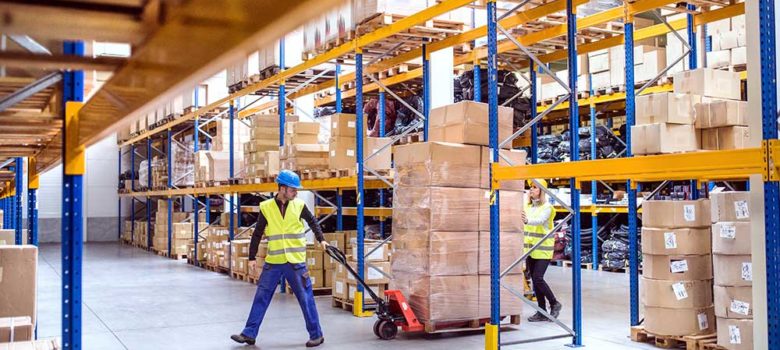
- Oct. 04
- Richard Parker
Inventory Is 2021’s Biggest Challenge: Here’s How to Cope
COVID-19 put a spanner in the world’s supply chains. When the crisis hit, existing stocks and relationships provided a solution for a while. However, now that the energy crisis is deepening and there are growing problems with the world’s food supply, inventory management is becoming critical.
Broken supply chains are wreaking havoc globally. Inventory is the biggest challenge we face today. And if we don’t solve it, there could be serious long-term consequences.
In this post, we take a look at some of the biggest challenges that businesses need to address going forward, and how to resolve them.
Use Software
Some companies in the supply chain are still using solutions, such as Excel, to manage their stock. While they worked in the past, they are wholly inadequate for today’s situation. We’re not in a world where long-term planning based on past data feeds is no longer possible. Firms need to be able to react to the circumstances as they are right now, or face acute supply shortage
The trick here is to use the right software. It turns out that you can now get demand planning software that integrates data from multiple sources, giving you a heads-up on what’s coming down the pike before your competitors. You’re then able to adapt your strategy as you see fit, instead of simply reacting to shortages or price hikes. If you can stockpile inventory before anyone else, you stand to make enormous profits when the shortage comes.
Improve Process Efficiency
It sounds boring, but improving process efficiency is one of the most effective things that you can do to boost your business and improve inventory outcomes. Skip high-cost labor solutions and, instead, use one of the many off-the-shelf automation products now on the market. If possible, use a conveyor system to move goods from their location in the warehouse to manual handling stations.
Improve Your Expertise
Inventory management isn’t something that happens automatically. Instead, it depends on having people in your organization who really understand how it works. Lack of expertise can be a significant impediment to company growth.
Consider whether you have the skills you need in your firm to keep inventory turning over while maintaining margins. It’s a tricky skill and one that generally requires several years of intense training and study to master.
Improve Your Production Planning
Often the problem isn’t inventory management itself, but poor production planning. If you produce too many or too few goods, then inventory will naturally be all over the place, especially if you cannot match demand.
Improving production planning requires creating a production process that can react quickly to changes in the wider economy. The best way to do this is to use state of the art sales planning technology, thinking carefully about how many units you’re likely to sell over the coming days, weeks, months and years, and then adjusting production accordingly.
Adapt to New Packaging Requirements
Packaging is changing, and companies need to adapt. New designs are actually making it easier for firms to process goods in their possession and reduce waste. However, many are still relying on products designed for retail, not online business.
If you’re in this camp, you need to change your approach. Work with suppliers to get online-specific packaging that you can easily process in your warehouses. Having the right packaging will make your operations more efficient and also improve the experience for end users.
Find New Ways to Differentiate Yourself
Increasing competition in the global supply chain is reducing margins for companies in the sector. Firms are experiencing massive downward pressure which is making it hard to compete with other providers.
The solution is to find new ways to differentiate yourself from the rest of the market. The trick here is to focus on a specific niche and run with that. If you can provide a certain type of inventory management or warehousing service, you can separate yourself from everyone else and charge a premium.
Allow Room to Expand
Sometimes, predicting what stock you need is impossible, even if you have the best forecasting models and data. That’s why it is always a good idea to leave room to expand beyond your main warehouse facility.
Many firms are doing this with the help of warehouse tents. These are essentially structures that you build alongside the main building, providing cheap and quick overflow storage for when you need it most.
Don’t Keep Too Much High-Value Stock
High-value stock is a liability because of the high risk of theft. That’s why many companies are now working on a value-lite model. The idea is to improve care, controls and storage to reduce risk.
React to Changing Demand
Once the pandemic news began spreading, demand for things like hand sanitizer and masks shot through the roof. People began preparing for disaster. Eventually, supply chains caught up and the situation improved, but it was a sign of just how much demand could shift in the space of a year or so.
Any business that runs an inventory needs to be prepared for these kinds of changes. The world is going through a period of profound turbulence and those who keep inventories need to be ready for it.
Boost Warehouse Efficiency
Consumers also want the lowest prices for their goods, so warehouse efficiency is also becoming paramount. Those that can get better at packing, picking and putting away will eventually come to dominate the market as they will be able to undercut their competitors on price.
How do you boost warehouse efficiency? The best way is to hire a consulting firm to tell you what you could do to improve. In many cases, they will suggest simple, turnkey solutions you can implement quickly, without having to redesign all your systems.
Improve Your Tracking
Lastly, false goods are currently a major supply chain issue. Counterfeiters are continually selling fake goods to the market.
Tracking technologies, however, can now help brands deal with this threat to their business models. Combining NFC tagging with blockchain makes it virtually impossible to cheat the system.



